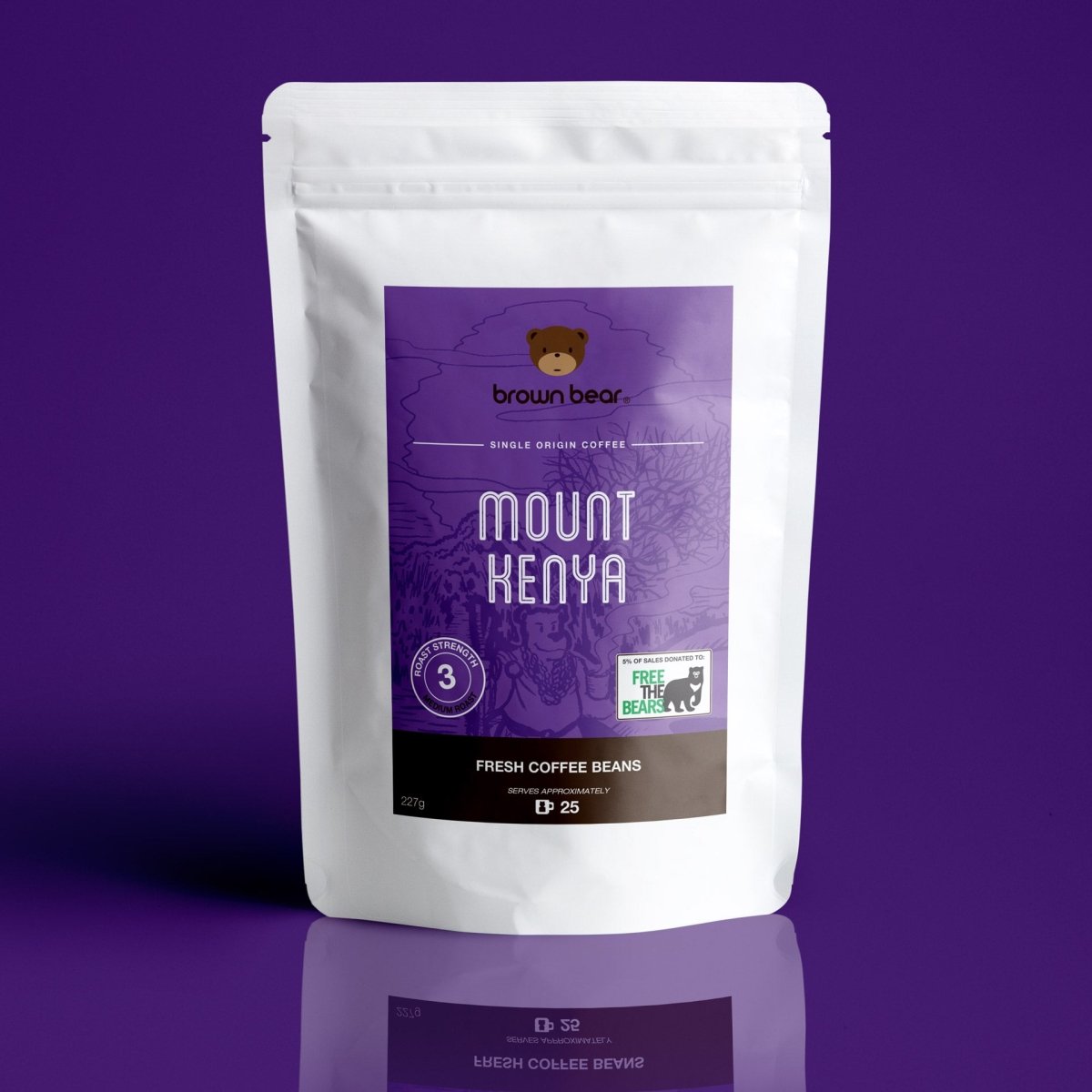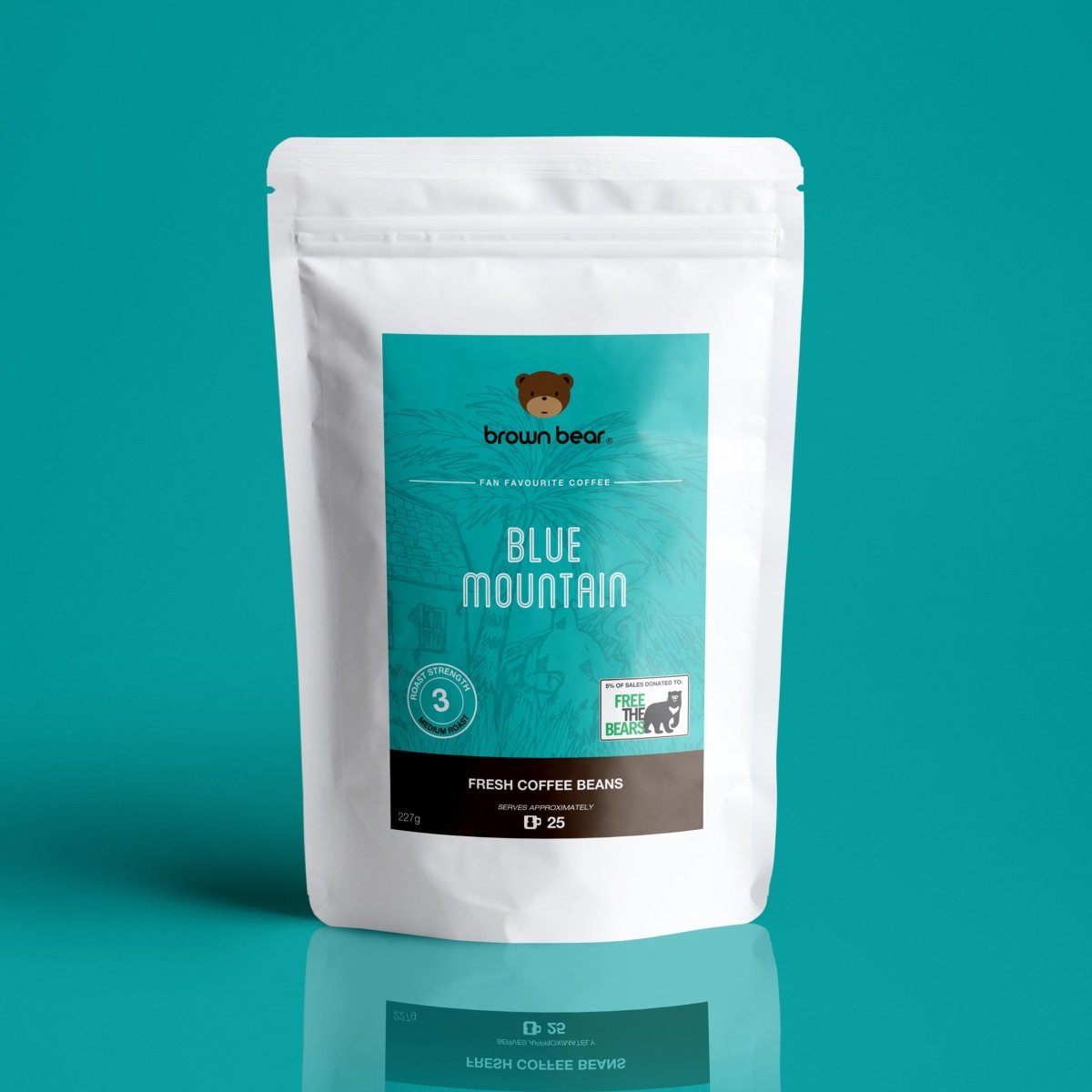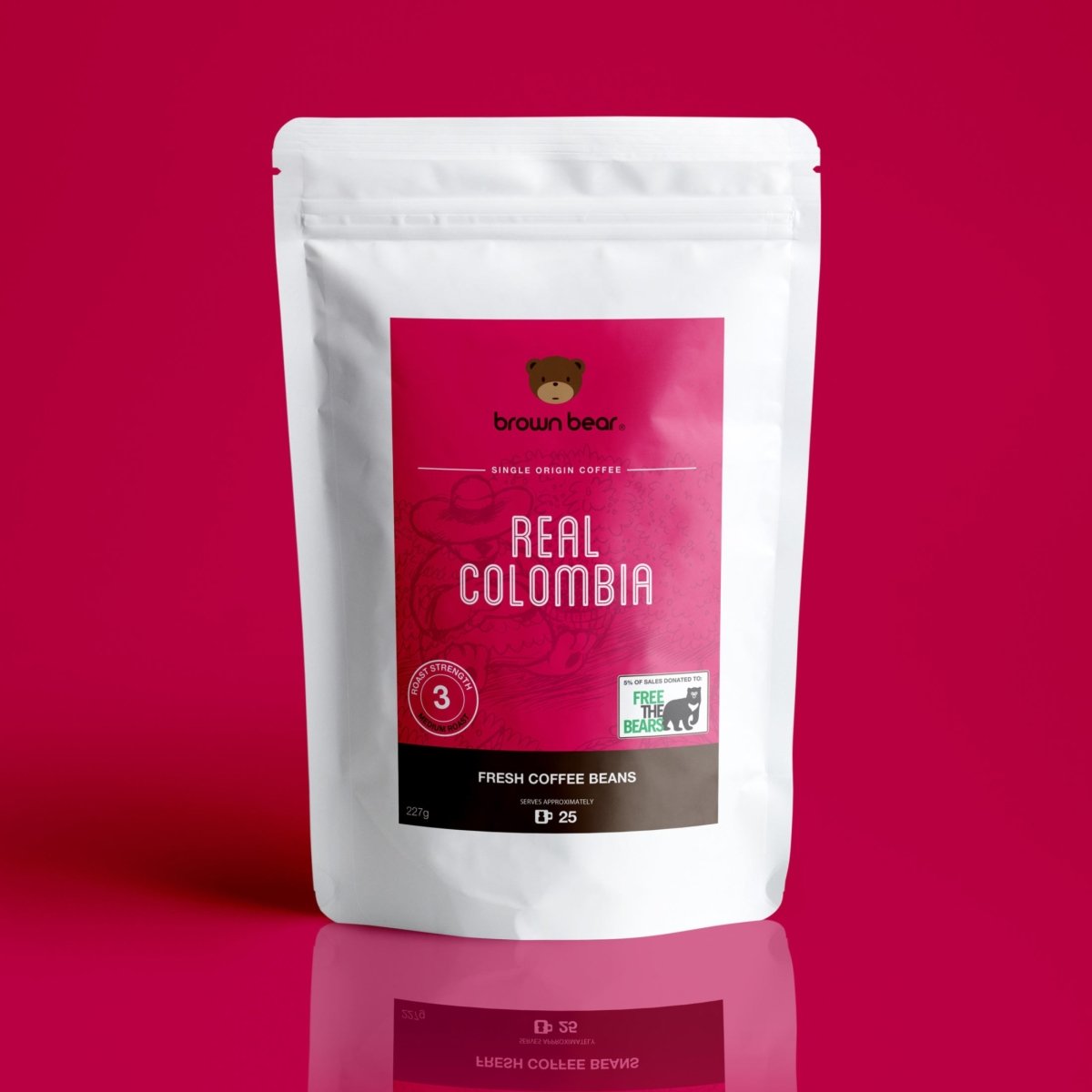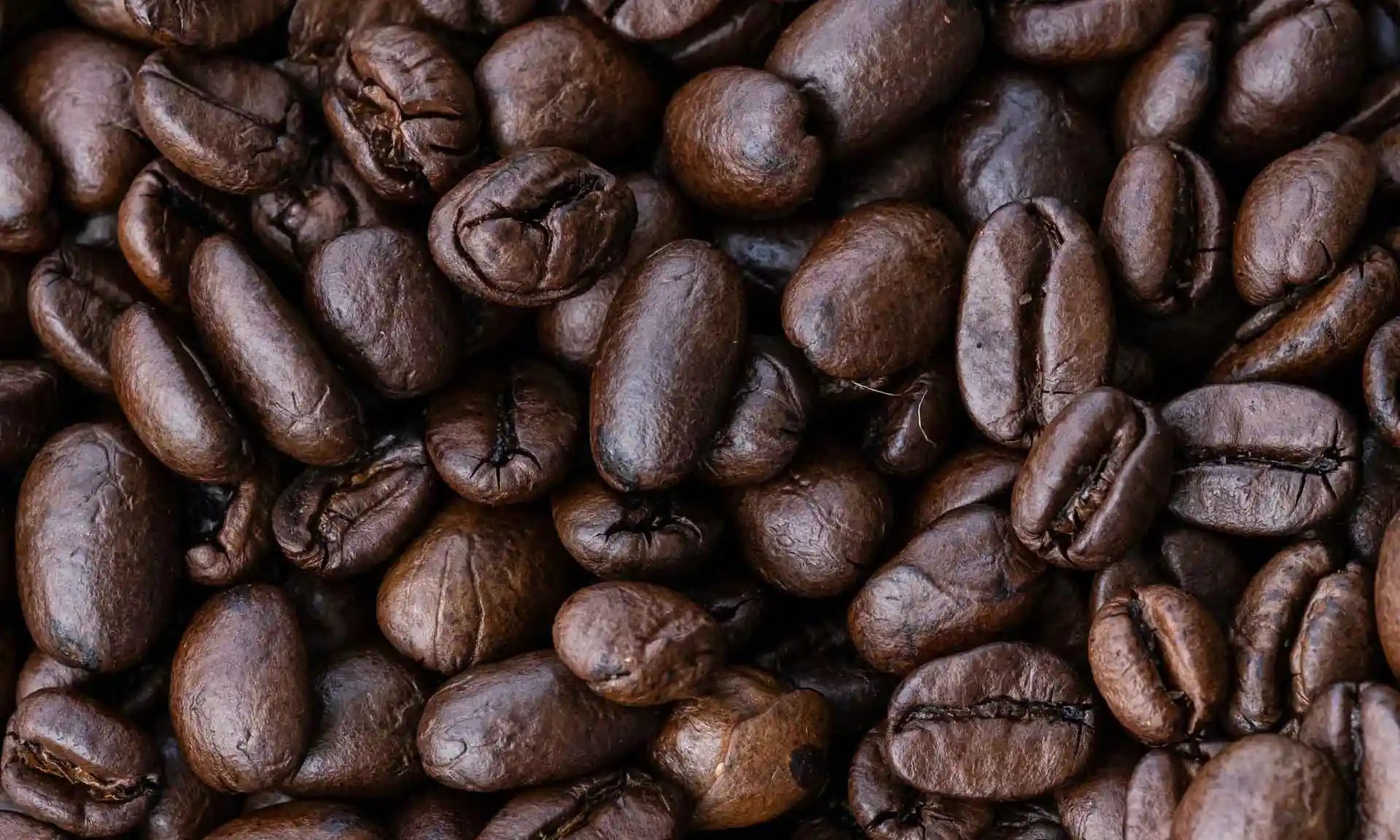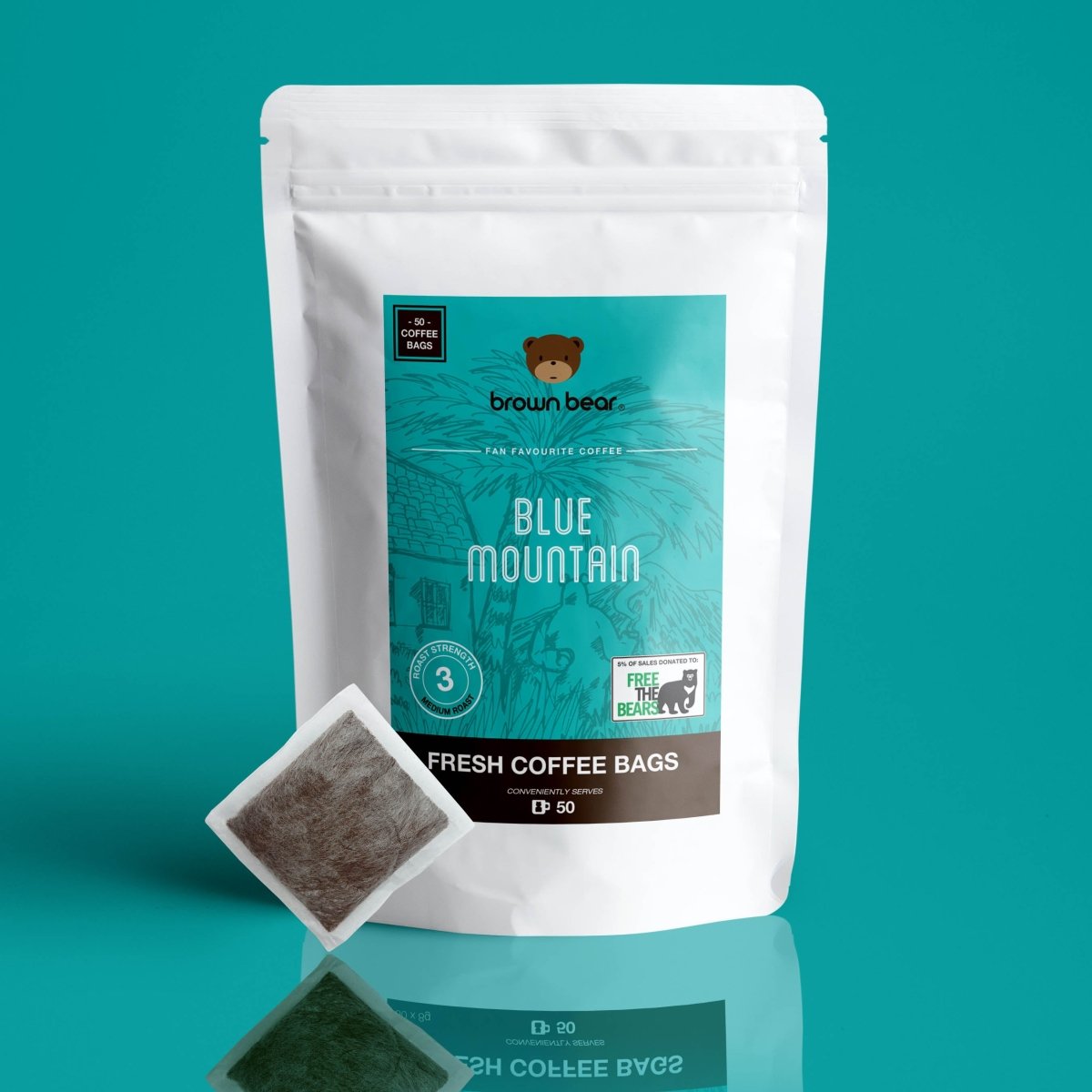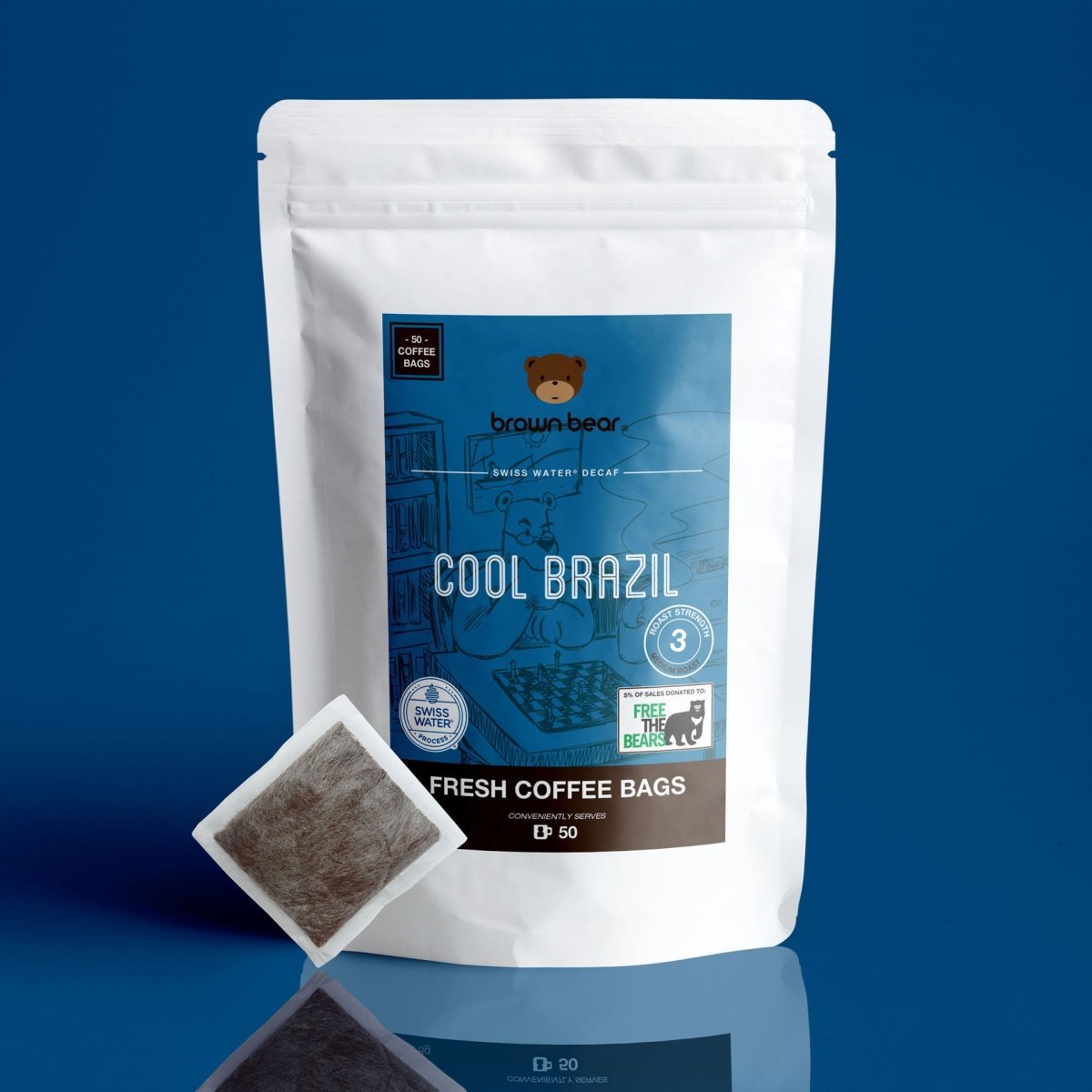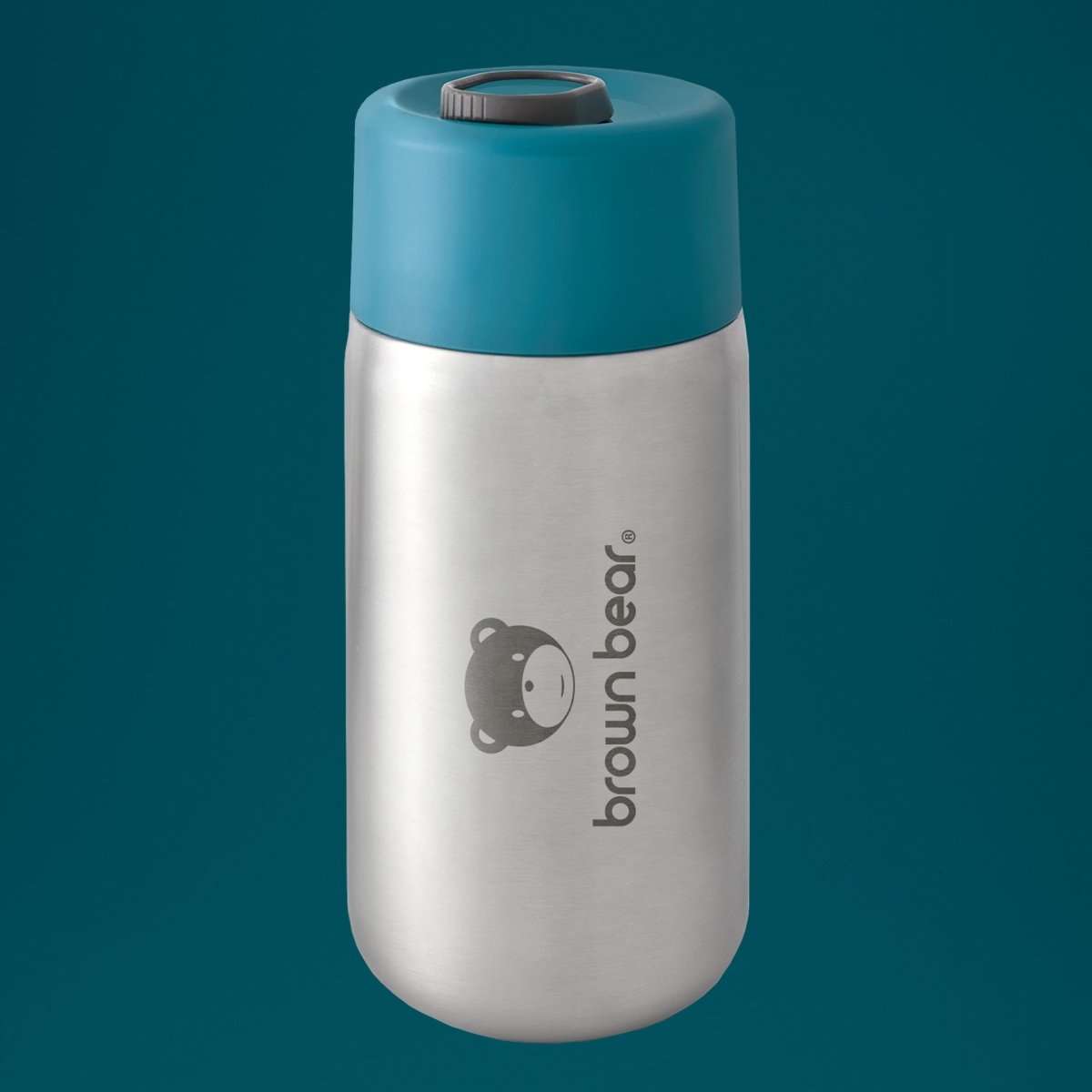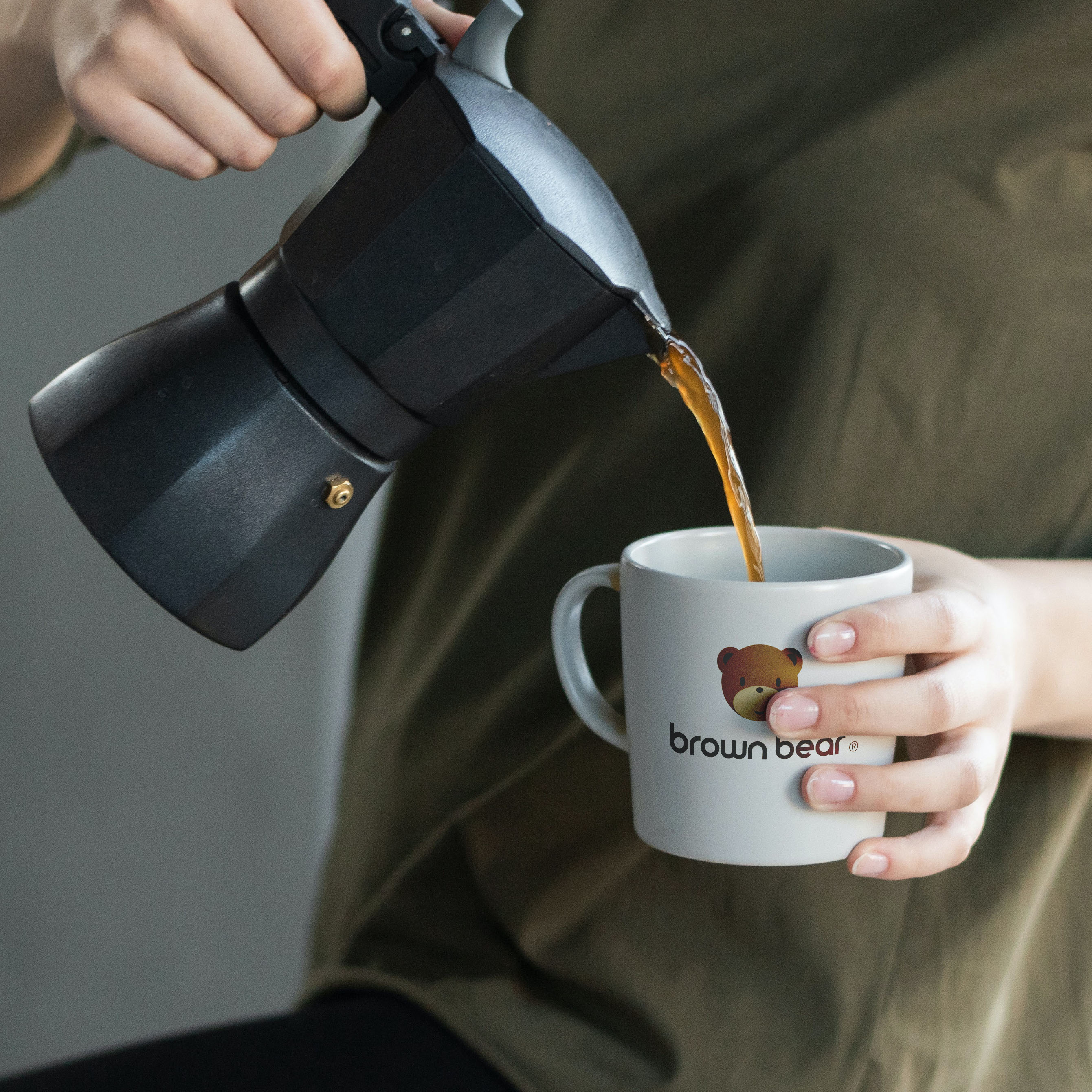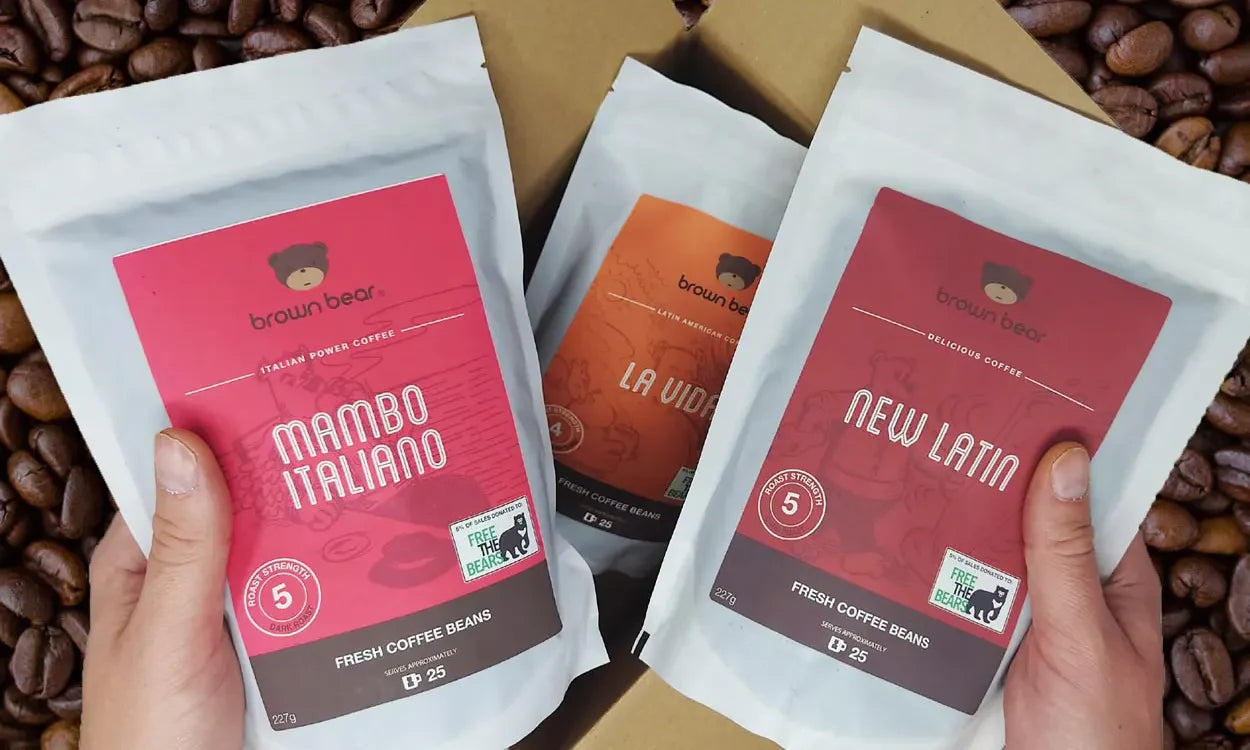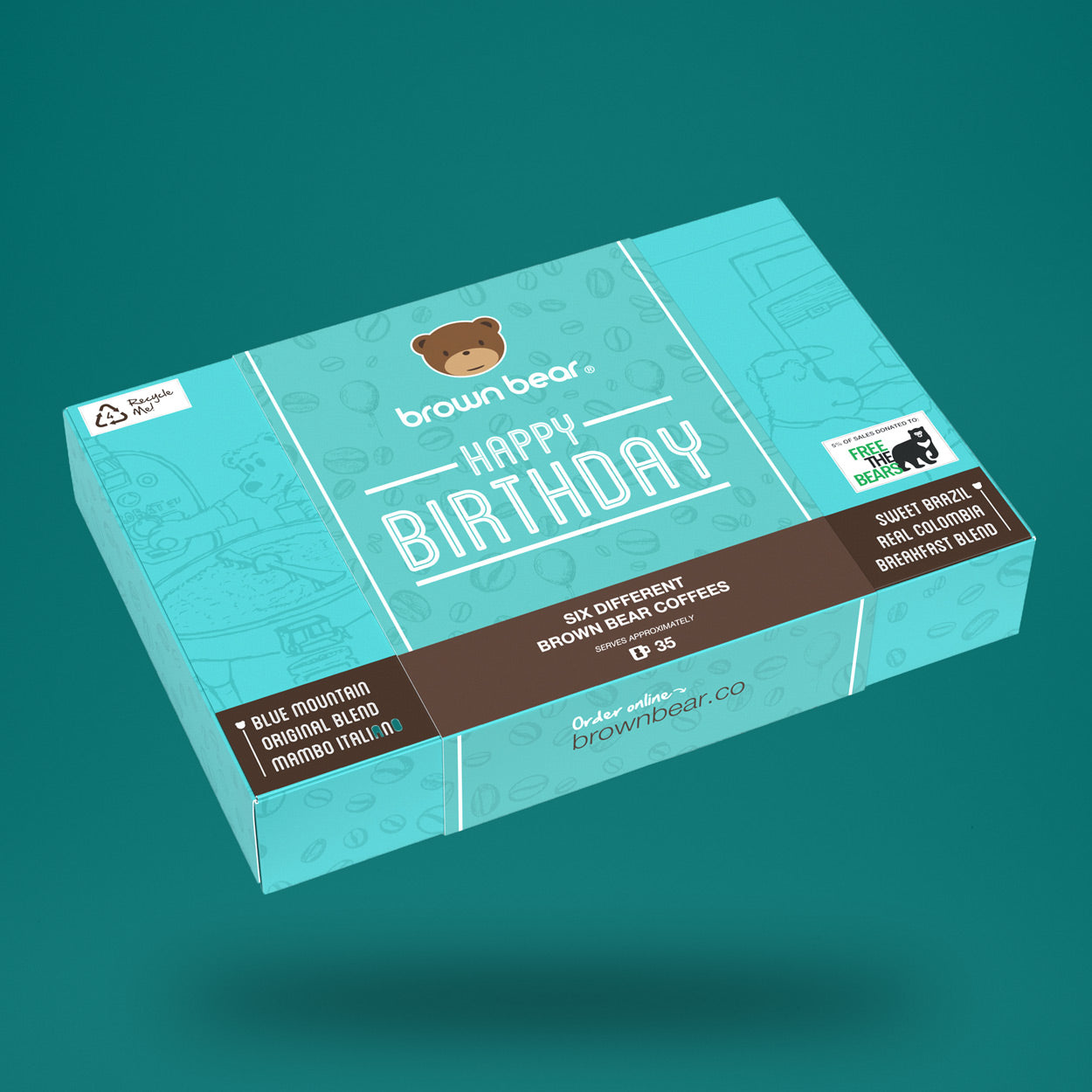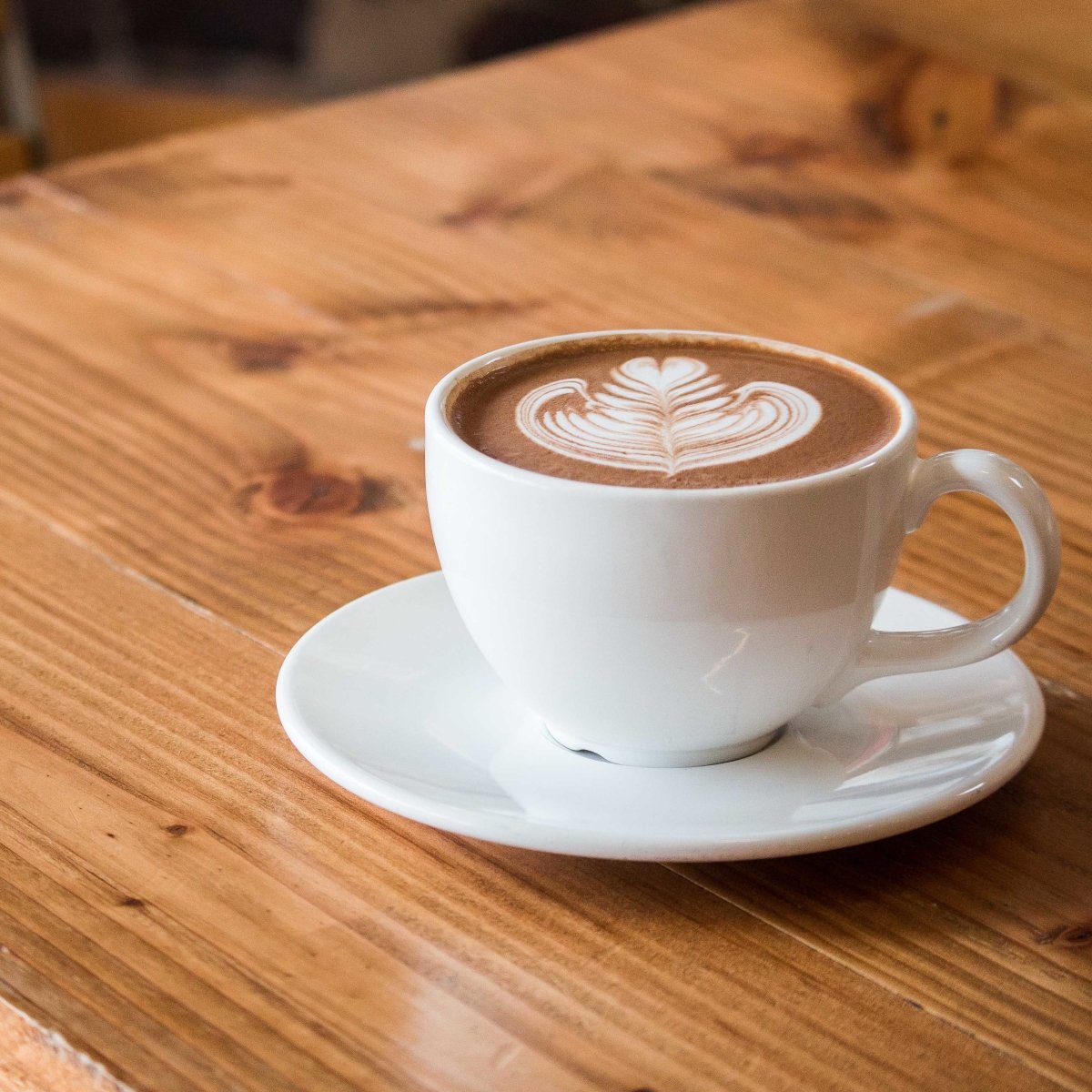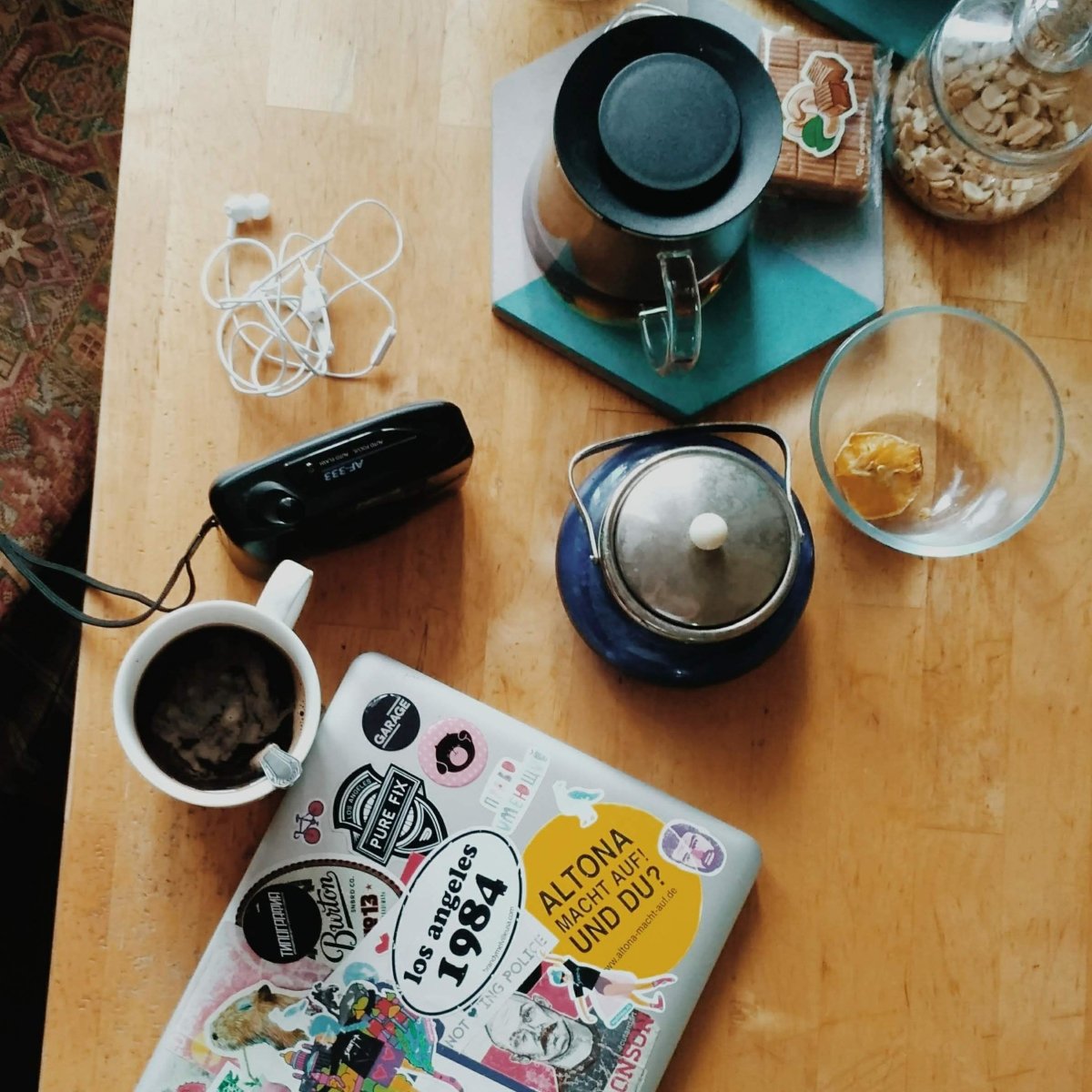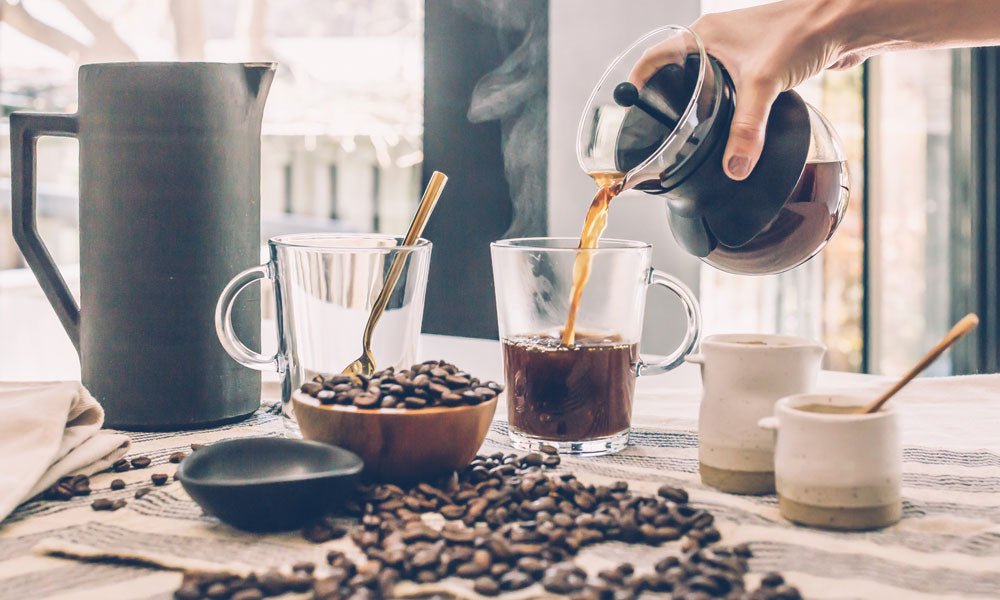What is coffee brewing?
There are two modes of coffee extraction: decoction and infusion.
All coffee-brewing methods employ one or the other of these modes. These names are also applied to the beverage which results from the mode employed.
A decoction is a liquid produced by boiling a substance until its flavour is extracted. A thousand years ago, coffee, as medicine, was a decoction of unroasted dried fruit, beans and hulls. Boiling was done in stone or clay cauldrons.
About 200 years later, the decoction was made of dried hulls alone. Then, during the following centuries, whole roasted beans and later ground roasted coffee were boiled to make coffee. So, coffee remained strictly a decoction for 400 years.
Infusion is extraction accomplished at any temperature below boiling. It is the only alternative to decoction, but can be broken down into various methods: steeping, percolation (dripping), or filtration.
Steeping is the simplest form of infusion: hot water is mixed with ground coffee loose in a pot or in a container resting on the bottom of the pot. Infusion becomes decoction if the water boils at any time that it's in contact with the coffee. Percolation really means dripping through fine apertures in china or metal. A true percolator would be a metal or china coffeemaker where the water dripped through the coffee once.
What is Turkish or Greek Coffee?
Turkish coffee is prepared by the oldest surviving brewing method: the decocting of ground roasted coffee. It is made in an ibrik, a tall, long-handled copper or brass pot which has no cover and tapers toward the top, designed to keep the mixture from boiling over and to keep some of the grounds in the pot when the coffee is served.
How do you make Turkish Coffee?
Measure three ounces of water for each demitasse cup and warm in the ibrik. Add to the water one very heaping teaspoon of darker-roast coffee or specific Turkish or Greek roast coffee, which should be ground like flour and a heaping teaspoon of sugar (more or less to taste) for each cup. Custom dictates that the sugar is left out at unhappy occasions such as funerals. Weddings call for extra sugar. Stir.
Bring to a boil over medium heat. Pour off half of the coffee into demitasse cups. Cylindrical cups are usually used as they keep the grounds well away from the lips. Boil remaining coffee again, and remove from the heat. Spoon some of the creamy foam of coffee into each cup. Another way to get foam into the cups is to make your hand tremble while pouring.
Fill the cups, but do not stir the coffee once it has been poured. While still on the stove the brew may be spiced with a pinch of crushed cardamom or orange-blossom water. As heavily sugared as it is, and even when heavily spiced, Turkish coffee is very bitter. To assure that it is not made unpalatably so, never continuously boil the coffee/water mixture, and always make it fresh.
If you don't have an ibrik, you can make Turkish coffee in a regular saucepan, but make sure it's big enough to contain the violent activity of boiling. You'll get less foam and a less aromatic brew, since much of the aroma will escape into the air.
How do you make cowboy or steeped coffee?
Coffee was earliest prepared as an infusion by the steeping method. This method was introduced in France in 1711 and it’s still a popular brewing method in America.
To make pot coffee or “cowboy coffee”:
- Measure cold water into a saucepan and bring to a full boil.
- Add the proper amount of regular ground coffee, turn the heat off or very low, and cover.
- Let steep for five minutes. Crucial to making good pot coffee is separating the finished brew from the spent grounds.
- Pour the coffee mixture through a strainer, cloth bag or paper filter.
How do you make filter or drip coffee?
The basic premise of filter of drop coffee is hot water passing through ground coffee and then through small holes in china or metal container into the coffee pot below. Jean Baptiste de Belloy, Archbishop of Paris, invented the first percolator, not to be confused with the later pumping percolator, in 1800.
De Belloy's pot, in reality a filter coffee device, was the preferred choice of the French gastronomist, Brillat-Savarin, and served as the model for hundreds of other inventors around the world. One of the inspired was Benjamin Thompson, better known as Count Rumford.
One of the most brilliant and bizarre figures in coffee history, Rumford was born in Woburn, Massachusetts in 1753, left his job as a Salem storekeeper for England in 1776 when he turned against the American Revolution, settled in Paris after marrying two wealthy widows in succession and died famous for his invention, adding cream and sugar to coffee and inventing a better percolator by introducing a preventing device which kept the grounds compressed in the container.
The basic method for making regular strength filter coffee is as follows:
- Pre-heat pot by rinsing with hot water.
- Add filter coffee into the coffee basket and replace the upper section. The Specialty Coffee Association of America, recommends 1:18 ration of coffee to water or 55 grams of coffee for 1000 ml (grams) of water.
- Use freshly boiled hot water (but not boiling!) into the upper section. When dripping is complete, stir the brewed coffee, and serve.
How to make espresso coffee?
Espresso is made by a filtration method modified to produce a very special brew. The early espresso machines, with their spigots, handles, and gauges, were designed to provide quickly brewed coffee hence the name. Speed was achieved by channelling, under pressure, a mixture of hot water and steam to individual spigots equipped with quickly detachable filters.
The early Pavoni espresso machines turned out 150 cups of espresso per hour. The larger "La Victoria Arduino" produced some 1,000 cups per hour. The modern, streamlined, low-slung espresso machines went into production right after World War I. Their bizarre, multi-spigotted, eagle-be- decked ancestors will be missed, but the newer machines have a form better suited to function.
The earlier machines tended to over-extract, to pull too much of the coffee from the grounds, producing a bitter flavour. Live steam, passing through the delicate coffee grounds, scalded the coffee, causing bitterness.
In the modern espresso machines, the horizontal water boiler gives steam and water better chance to mix. Thoroughly blended steam and hot water pushed through the coffee under pressure yields a cup smooth and palatable, with no sacrifice of strength or flavour. When you make espresso at home, remember that best results may be obtained by using a machine which incorporates the above-mentioned principles.
How to make moka stove pot coffee?
In Moka stove pot systems, steam is used to force hot water through the ground coffee, but the steam itself does not pass through the ground coffee or extract flavour.
A fine vacuum grind should be used for Moka-type stove pots. Fill the coffee cavity along with three ounces of water and follow the directions that come with the pot.
What is instant coffee?
The processing of soluble coffee has gone through many adaptations, but the basic principle is that it is the conversion of roast coffee into the instant or soluble form and entails the extraction of the ground coffee with water to form a concentrated liquid brew, and then removal of water from this brew by some method of dehydration. What's left, the residue, is instant coffee.
Instant coffee is the most popular coffee drink in the world. For example, in the UK, 80% of households have instant coffee in their store cupboard and it’s worth 55% of all coffee sold in the UK. It’s also popular in USA, Africa, Russia and South America, but almost impossible to find in coffee cultures like Italy and Spain.
In the 1940s, instant coffee was typically a fine light-coloured powder, usually containing as much as fifty percent of added carbohydrates to bulk the product in the jar and in the teaspoon.'
In the early 1950s, the more sophisticated dehydration technique had been developed to the point where larger particles of instant coffee could be produced. Packagers felt this bulkier product was attractive enough to discontinue the addition of carbohydrates.
The processing of instant coffee resulted in a product devoid of coffee aroma, so, in the early 1960s some processors hit on the idea of adding "aroma" to the instant coffee product in the form of oil removed from the roasted beans prior to extraction to give it a “coffee smell” in the jar when they first opened it.
The next great "advance" in soluble coffee processing occurred in the late 1960s when the process of agglomeration was introduced whereby particles of instant coffee were steamed and made sticky so that they would lump together. These lumps were redried by reheating. The result was a product which looked more like ground coffee because it was chunkier and usually darker.
Most recently, a new, more complex technique of dehydration called freeze-drying was introduced into instant coffee manufacture, which makes the final product look even more like ground roasted coffee than agglomeratedcoffee and offers a real advantage in cup quality because the extract is not exposed to a stream of hot air as in spray drying
The incredibly high concentration of soluble solids in instant coffee is achieved by extracting under very high pressures. Hydrolysis occurs and the cellulose in the coffee beans is converted to water-soluble carbohydrates. The greater the heat, the greater the degree of hydrolysis, the more soluble solids are extracted.



